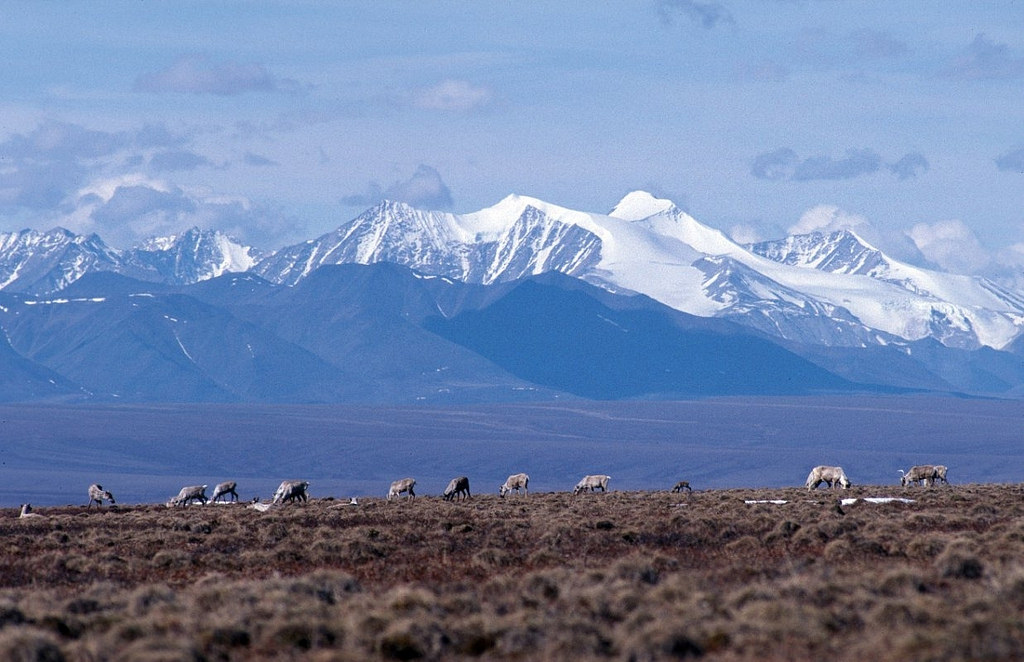A controversial plan to open Alaska’s Arctic refuge using federal budget bill moves a step closer to reality

Oil drilling in Alaska’s Arctic National Wildlife Refuge came a step closer to reality on Wednesday with conditional approval from a Senate committee.
On a party-line 13-10 vote, the Senate Energy and Natural Resources Committee approved legislation sponsored by Alaska Sen. Lisa Murkowski that would fold approval of ANWR oil and gas leasing into the broad tax bill being considered by Congress and promoted by the Trump administration.
Murkowski chairs the majority-Republican committee. Her legislation, introduced last week, casts ANWR oil development as a budget and federal revenue matter.
As a budget matter, ANWR drilling would not be subject to potential filibusters that could halt movement of bills lacking support of 60 votes, difficult to achieve in a Senate that is very closely divided. Approval of drilling could come with a mere 50 Senate votes, along with a tie-breaking vote from Vice President Pence.
Murkowski’s legislation would require the Department of Interior to hold two lease sales in the next 10 years in the refuge’s 1.5 million-acre coastal plan. Leasing, if it happens, would generate over $1 billion in federal revenues over the next decade, Murkowski said in her opening statement at the hearing where the vote was taken. But the bulk of the economic rewards — “likely tens of billions of dollars in new federal revenues,” along with thousands of new jobs — would come later, after production gets underway, she said in her opening statement.
Alaska oil-industry supporters cheered Wednesday’s Senate committee vote, while environmentalists blasted it.
Gov. Bill Walker, who testified before the committee on Nov. 2 in favor of ANWR drilling, said Wednesday’s vote was a milestone in Alaska’s decades-long effort to allow oil development in a part of the wildlife refuge that state officials insist was set aside specifically for that purpose.
“Thirteen-10 is my new most favorite number,” Walker said in a speech to the Resource Development Council for Alaska, which started a two-day conference in Anchorage on Wednesday.
“It’s been a long journey. We’re not across the finish line yet. But today was a great day. And I cannot thank Sen. Murkowski enough for her continued push on this,” the governor said. “It was phenomenal to see that vote taken today.”
Kara Moriarty, executive director of the Alaska Oil and Gas Association, said the industry is fully backing Murkowski’s effort to open the refuge to drilling — just as it supports more leasing in onshore and offshore areas of Alaska.
“For us it’s access. Because we cannot bring investment to Alaska if we don’t have access to the resource,” she told the RDC conference audience.
Environmentalists have criticized the legislative strategy as an underhanded way to slip an important environmental-policy change into tax and budget policies. They continued that criticism on Wednesday
“This bill is an outrage for many reasons,” Drew McConville, senior managing director of The Wilderness Society, said in a teleconference held after the committee vote.
“The bill would sell out a natural treasure to the oil industry on the cheap so that Congress can give tax cuts to millionaires and billionaires,” McConville said. He called Arctic refuge “one of the last pristine, truly wild places in America” and the “crown jewel of tour national wildlife refuge system. The coastal plain, the area targeted for drilling, is the biological heart of the refuge, the place where caribou are born and polar bears den, he said.